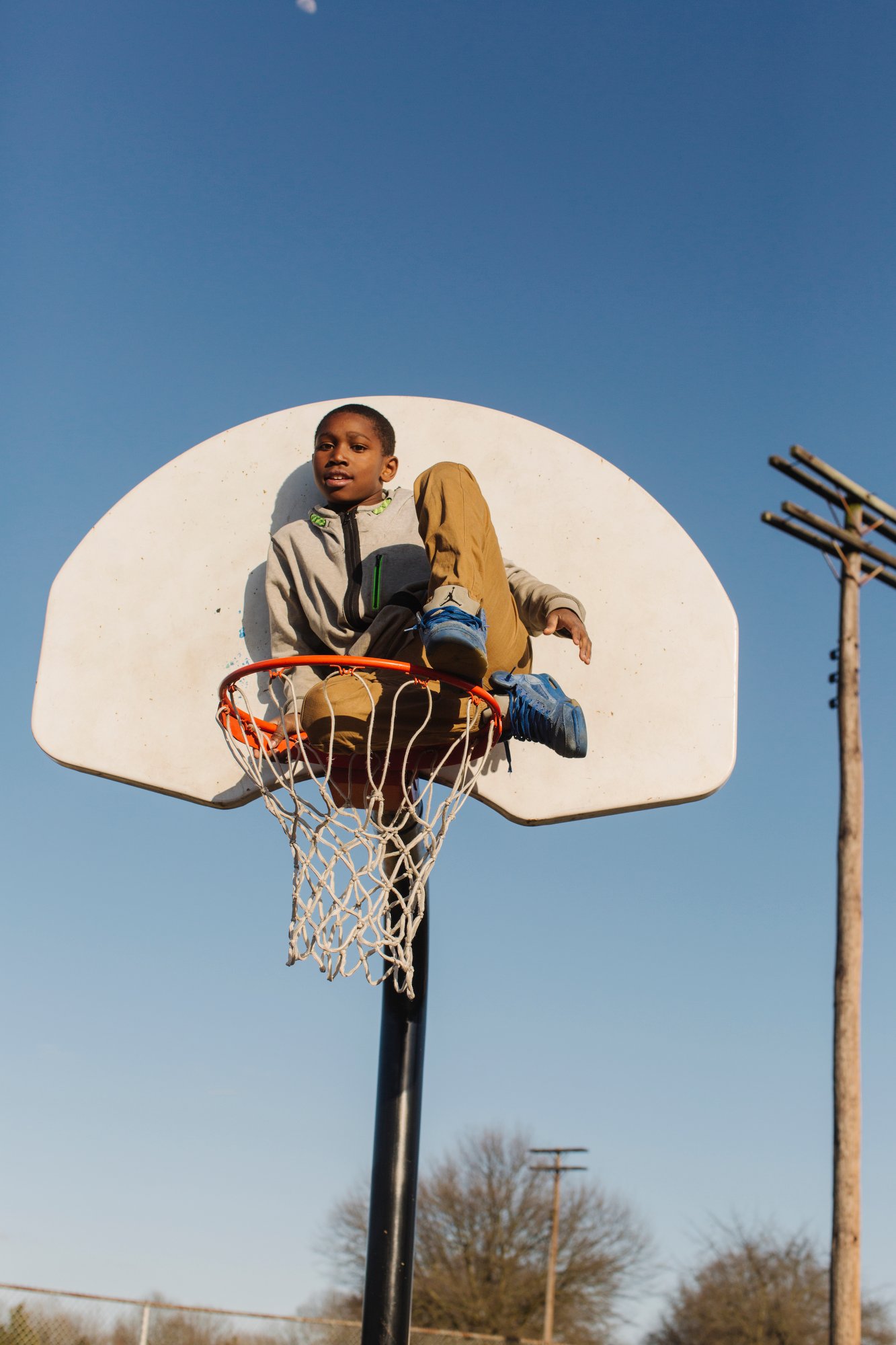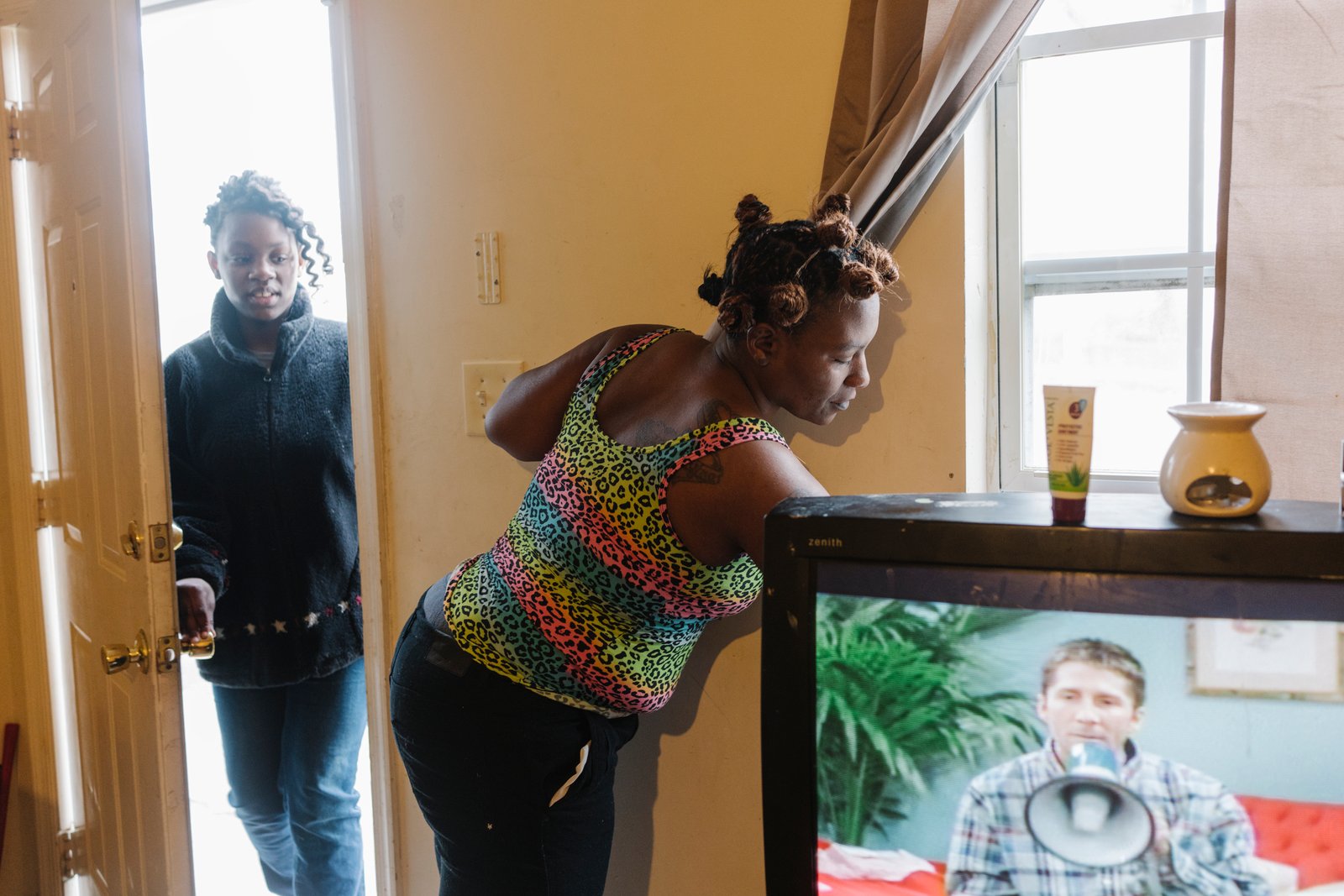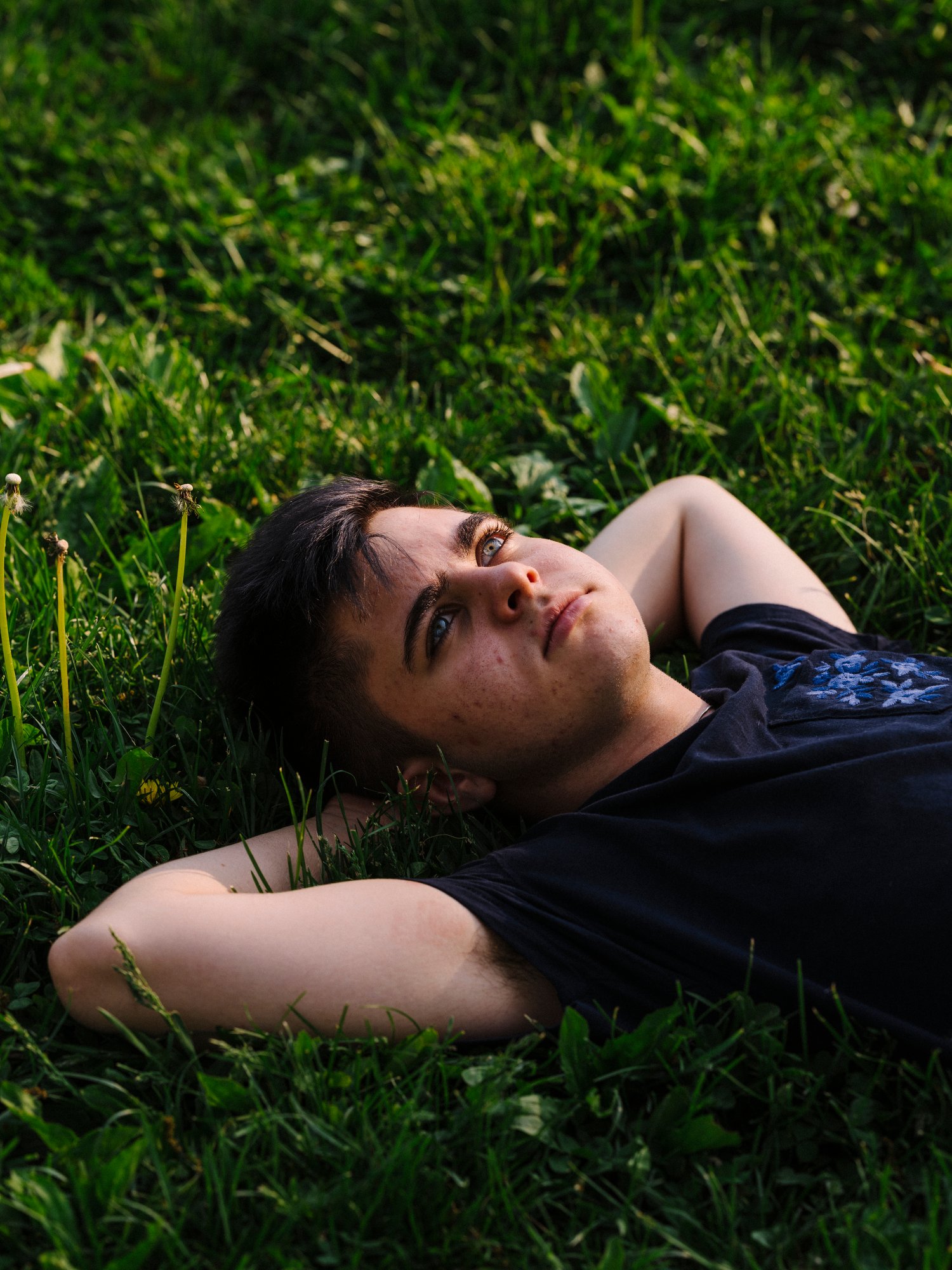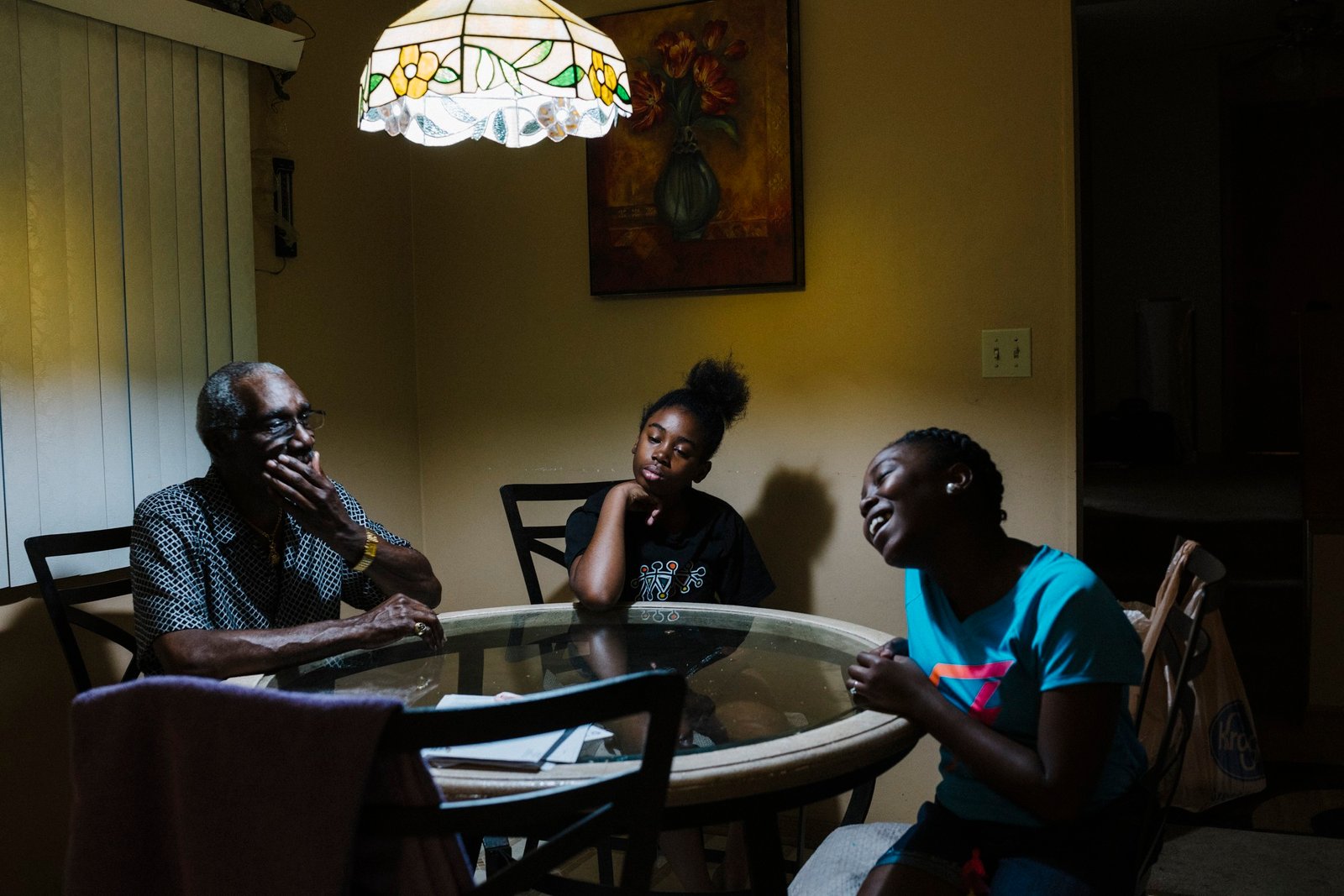Matt Eich doesn’t really have a discernible practice, in my eyes at least. He could be called a documentary photographer, he could be called a photojournalist, he could be called an essayist, he could be called an abstract fine art photographer. Though he’s not really any one of those things. One of the most striking things on his site is a gallery called Family Album – a collection of images from his own, as he calls it, ‘visual lineage’. Images which he was brought up amongst, that serves as a more visceral framework for his understanding of photography. The photograph for Matt Eich could be seen as a collective act, and in this sense, rather than any of the other definitions above he seems to be a purveyor of photographs, who most often makes the images himself. This is probably most obvious though The Sellers Family Album, made up of images taken by Kacey and Lacey sellers, who always had a knack for taking interesting photographs with his cameras. Eich began sending disposable cameras to the twins to see what they came up with. It’s this interest in the image being made, and especially in the possibilities of the untutored eye. These images become something more than just photography, they become part of creating culture.
To survive financially, Eich wears many hats: part freelance photographer, part educator, sells prints, at the same time applying for grants and licensing existing images. Each is interlinked to get to the next pay check and still have a family life (which with a family of four is no mean feat). None of what he does is one source to be relied upon, and it is still a case of waiting on freelance commissions to feel more comfortable. Most of the time this is when a client is offering under budget, and quite simply the wage doesn’t fit the time and effort spent. It also comes down to copyright – for an editorial rate, Matt will expect to be able to license those images at a later date or use them in personal projects, for commercial rates, the client occasionally owns the rights – but this lack of ownership for Matt has to be ‘compensated for.’ The more work being done for low paying clients means as a general rule the less personal work being made. Probably one of the most difficult things to learn about working freelance is making time for yourself, and time for family. Taking up low paying, dissatisfying jobs means that everything else suffers, especially this balance, and in the long run your ability to make work.
Eich’s documentary work, even when commissioned, certainly takes on a slightly more abstract tone to most documentary pieces. This can most easily be seen mostly through his commissions for ESPN or Sports Illustrated, where the focus tends to be on the minutia of what is happening around the game rather than in it. The ability to shoot in a more alternative fashion is a balance between him understanding what the client wants, and the client having some sort of prior knowledge of his work. The client’s needs come first but part of the process is Eich prioritizing creative space for him working in his own way too. ‘It’s not often that I get assignments that feed into my larger interests, but on a good day, I can get paid to make pictures that fulfil a client’s needs and the work also connects to my own creative pursuits.’ This is an invaluable way for all of the images to feel much more involved and intimate. That said, he says he’s ‘pretty sure over the years an editor or three haven’t hired me again because what I turned in didn’t align their expectations.’. When asked about the political relation to his work, it tends to just be that those media outlets which tend to have a sense of visual culture seem to be left leaning, even if across the board they all generally begin a commission with a preconceived notion of what they would get from it and what the story is. There are some outlets which Matt will straight up not work for, just because of their brand or they stand for. It’s an important distinction to make between someone like Eich, who creates something slightly more abstract than most photojournalists. These images, whether initially part of a personal project or not, are inarguably part of his personal practice.
Like many, his first taste of using the camera came through family when his grandfather leant him a small point and shoot camera while taking him on a road trip when he was about ten years old. From then he began using his parents’ cameras while saving for his own. Through growing up in a rural community his first interests were in nature, flowers and birds, though at the same time photographing his family, which he never thought of as ‘real’ photography. Eventually studying photojournalism, Eich was originally trained to make pictures for publications, though found that most of his ‘real education’ came from absorbing photobooks (an obsession which still hasn’t seceded). It’s probably for this reason that he most identifies with the description photographic essayist, as someone who’s work is more long form, though still entirely focused on the more discernible narrative.
Perhaps one of the reasons Matt’s work seems to fit multiple approaches and styles is because creating seems to be a cathartic release for him. As he continues to find a better balance between life and making he’s turned his hand to painting, playing piano and zine making. Outlets that though don’t directly relate to his current practice, do mean that he keeps constantly busy even during the quiet months. This is something that can be far more important to making work – always creating things keeps the ideas flowing, and really importantly, means that you don’t dwell too much on daily failures, or only on the big projects. He calls it being ‘creatively loose’ and it means that you think about your work and the way you make it in a much more fluid, malleable way – which should be something you can always develop. As he says himself, ‘I don’t have much of a plan.’, and will only realise that he has created something once he’s been working on it for a while. It’s all part of this desire to create, and be making things, which feeds directly into the making of the work in the first place.
In his work it’s a constant balance between being sent away on assignments, and his own creative pursuits and on a good day, he can make images which serve both purposes. It’s rare to have someone find such a good balance between their commissioned work and their personal work. It’s striking how well that Matt seems to have developed each to feed into the other but then everything in his work is about finding balance – finding the balance in the relationship between him and the people he’s photographing, finding the balance in projects between the usual and the unusual, and finding that balance between his personal work and the commission.








